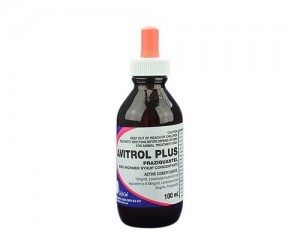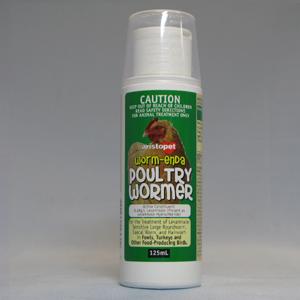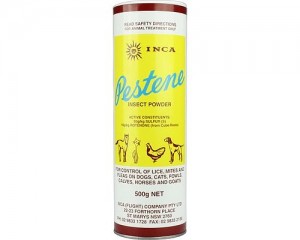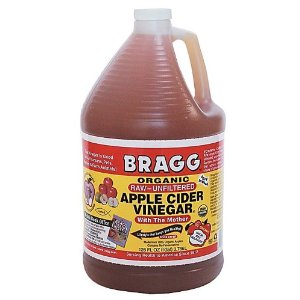Disclaimer: The advice I am giving based on my personal experiences with ex-battery hens. This is not gospel & if you are in doubt about the health of your birds then please contact a qualified poultry vet.
There are a few vital things that one needs to know before deciding to take home ex-battery hens:
- Shorter life expectancy. Due to the harsh conditions these birds are kept in, their poor bodies cannot last the normal 10 years that other chooks last. Remember– these chickens have never felt grass, scratched dirt or stretched their wings. Even just one day of freedom is better than none. How long will your girls live for? I can’t say, I have had mine for a year and they’re still going strong. Most people say that they lose their girls after a year and a half – two years, but each chicken and their situation is different. Unfortunately, it is usually tumours in the reproductive system or prolapses due to the excess laying they have been forced to do that takes their life.
- Chickens do eventually stop laying eggs. These chickens are past their prime egg-laying period. After their first moult at approximately 18 months of age hens lay fewer eggs. My girls on average lay 4 eggs per bird per week.
On the plus side, battery hens are all vaccinated against serious diseases.
When you first bring your ex-batt girls home
Quarantine
This is VITAL. Whenever you bring new chickens home it is always important to quarantine them for approximately two weeks to ensure they don’t have any diseases. This is particularly important if you already have an established flock at home. In terms of your ex-battery hens, you can treat the small temporary pen (see here) as the quarantine pen.
Feed
Feed your chickens a good quality layer mix. I feed both grain and pellets. When you first bring your ex-batts home they will have been de-beaked so eating may be difficult. Use deep dishes so that they can easily peck the seed/pellets. I also wet the pellets with warm water to make eating easier. As a special treat on cold days and/or to get your girls to eat you can try mixing oats in with some pellets and warm water.
When the birds are in moult I also mix in some dry cat food to increase their protein. Note: when your chickens are moulting they will look scruffy and most likely stop laying eggs until they finish their moult. This is due to the huge amount of protein needed to grow new feathers.
When you first bring your girl’s home try to refrain from feeding them any treats – fruit, vegetables, food scraps, etc. They have never been exposed to such foods so they need to be introduced slowly after a few weeks in your care. Start off by giving them some greens and slowly build the treats up from there.
Grit
There are two types of grit that chickens need. They need small stones and shells to help grind up the food in the crop & they also need grit, such as oyster shell grit, for calcium to lay sufficiently strong eggs.
Common Health Concerns
The number one tip I can give anyone with chooks is to keep a close eye on what your chickens are pooping out. This will tell you if something is wrong with your chickens before it advances – often once you start seeing your chooks fluff up and act “down” it can be too late to successfully treat them. See here for a page full of chicken poop showing what’s normal and what’s not. I find this page absolutely vital in diagnosing if something is in fact wrong with my girls.
Things that every home with chickens needs:
- A good poultry/bird wormer. Birds should be wormed approximately 3-4 times a year or when worms are suspected.
- Lice & mite powder. Chickens need to be regularly deloused. Dust baths also help reduce live & mite infestations.
- Apple Cider Vinegar. This clears out all the “nasties” that might be in the water. It’s also a natural anti-fungal. I put it in the girls water once a month for a week at 1 capful per 1L water. If mild gut/crop problems are suspected I triple this amount as well as syringe it to the bird.
- Garlic. Garlic is a great natural antibiotic and a clove should regularly be put in their drinking water as a preventative. It can also reduce worm infestations.
Worms
Worm infestations are inevitable in chickens- they pick them up from slugs, snails & worms and transmit them via their droppings. It’s a good idea to regularly worm your girls- around 3 to 4 times a year seems to be the general go or whenever you suspect any of your girls might have a heavy load.
How to tell if your birds have worms? For the most part it’s all in their poo (again, see here!). Signs to look out for (note not all will present, it all depends on what type of worms your girls have):
- Yellow frothy poop that isn’t the normal caecal poop.
- Runny poop.
- Lots of intestinal lining in poop.
- Actual worms in the poop.
- If your chooks have gape worm you will notice lots of ‘yawning’ and neck stretching.
With more severe infestations you may see some of the above as well as:
- Chooks acting ‘down’ – not as active, often alone, fluffed up.
- Loss of condition – loss of weight, dehydrated, pale wattles and combs.
- Lack of egg laying.
If unsure, take a poop sample to the vet – they can tell you 100% of worms are present or not.
Left untreated, a severe infestation will kill you chickens. For more information see here.
Mites
Mites are also inevitable in chickens and it is important to control these. If you pick your chickens up and can feel things crawling on you then you have a heavy infestation and must do something. If you see your girls shaking their heads excessively, this might also be a sign that they have mites.
I delouse my girls every couple of weeks just in case. To do this I get my partner, Sam, to hold them upside down by their legs (up high near body), wrap the chooks head lightly with a face washer (to stop the powder from going into eyes) then I put the powder under the wings, chest & bottom (I ruffle the feathers a bit to get the powder in under them.) I then get Sam to flip the chook up the right way and I put some powder on top of the body and up near the neck (again ruffling the feathers.)
After the girls have been deloused and then clean the coop out completely, liberally put the powder down on the ground then put the new hay in. The mites like to live in nooks & crannys & in wood so delousing the coop is vital.
Make sure you have a dust bath available for your girls (not that you really have a choice, they’ll no doubt make several in the yard) as they help reduce mites & lice.
For more information see here.
Crop Problems
There are two major issues that you might see with chickens and their crops.
Sour crop
This is caused by a fungus. One major cause is if your chook feed becomes damp so try to keep feed as dry as possible.
You know if your bird has sour crop because the crop will not completely empty overnight and instead will feel large and squishy like a balloon. When you open your bird’s mouth you might notice a sour smell. You will also notice that your bird is passing less poop.
A couple of months ago I noticed that Alkaline wasn’t passing a lot of poop. When I felt her crop sure enough it was large and squishy. I straight away put her in a separate run so that I could keep an eye on what she was passing and control what she was eating.
I then followed these steps which worked for me but again, I’m not vet!
- I withheld food for 24 hours to give her crop a chance to empty on its own.
- I provided water with Apple Cider Vinegar (ACV) at a rate of 3 capfuls per litre of water.
- I syringed 10 mL of the water/ACV mix directly to her three times a day. I then spent a few minutes gently massaging the crop in the hopes of getting some food down.
- As she wasn’t keen on food, I fed her mashed boiled egg and offered her pellets mixed with a tablespoon of organic natural yoghurt.
- After three days of this treatment she was fine.
When I first got Duracell she had sour crop, but it was far too advanced to fix myself. A quick trip to the vet and a week worth of anti-fungal medication cleared it up. In the meantime I kept up the regular ACV & crop massages.
Impacted crop.
An impacted crop is when food cannot pass through the crop due to a blockage. Sometimes it is just a partial blockage and you can dislodge it by syringing 2mL of olive oil every 2 hours and massaging the crop. If massaging the crop is not fixing anything then you may need to consider taking the chook to the vet. Some websites suggest turning your chicken upside down and massaging the crop until the chicken vomits. To me this is hugely risky as the bird can very easily aspirate the vomit. Personally I would leave all such procedures to a vet.
To reduce the chance of an impacted crop, ensure you do not feed your chooks grass cuttings or use wood shavings or small cut hay as bedding as these can cause blockages when swallowed.
For more information on impacted crops and on digestive infections see here.
I purposefully have not discussed the more serious diseases (Marek’s, Coccidiosis, etc) as battery hens are fully vaccinated to ensure they do not get such diseases.
Remember, if in doubt; take your chooks to the vet!







Recent Comments